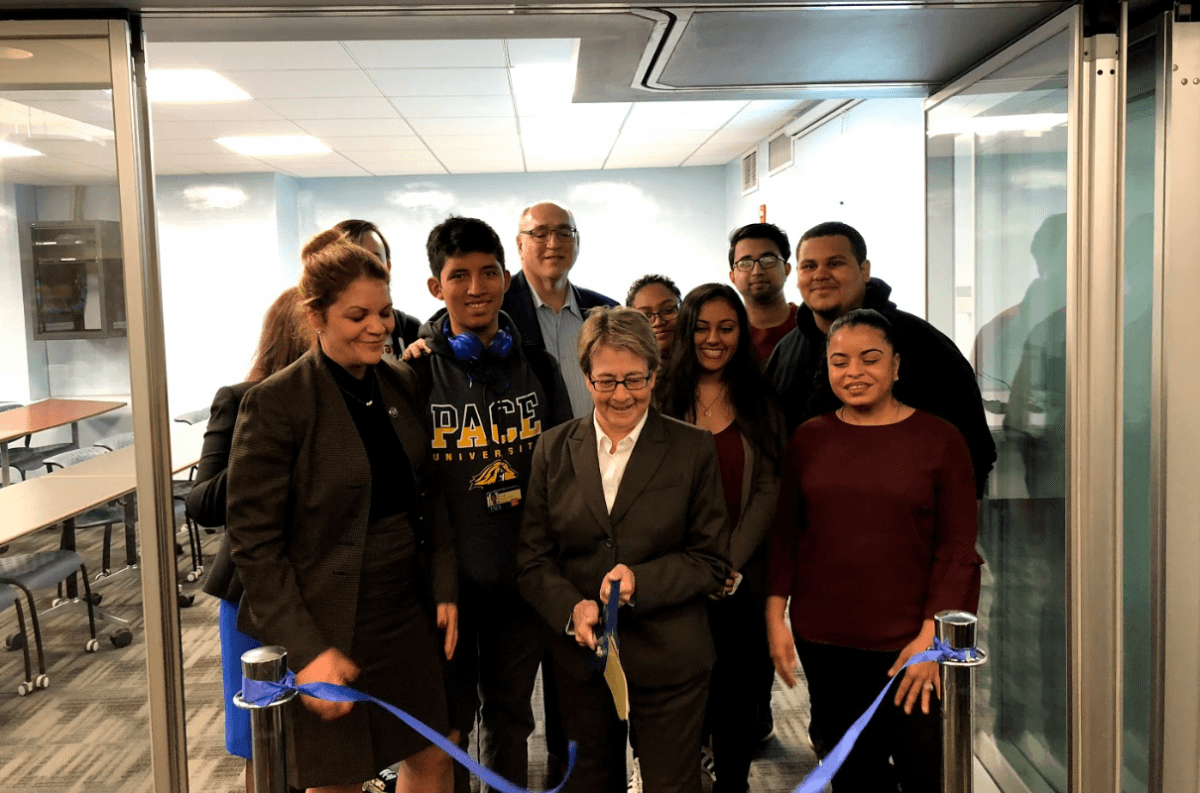Pace University’s Seidenberg School of Computer Science and Information Systems and Assembly Member Deborah J. Glick celebrated the opening of an upgraded computer science educational space with a ribbon cutting ceremony. The event included students, and university officials along with Assembly Member Glick and unveiled the new space at 163 William Street in lower Manhattan. Renovations were supported by a $500,000 government grant, which is part of the State and Municipal Facilities Program, also known as a “SAM grant.”


New features of the computer science learning space include a think-tank style classroom, and a dedicated space for the NYC Design Factory, an undergraduate program that pairs Pace students with outside companies and tasks them with developing projects and innovative apps for the companies. Reinforcing the latest research in team and group strategies for problem solving, the space provides communal areas for students to study and work in teams. The creation of these new modular meeting and training spaces provides students with collaborative learning spaces where projects can come to life.
Assembly Member Deborah J. Glick, who helped secure the grant said, “I was very happy to have the opportunity to allocate this money because Pace is comprised of a group of strivers and helping to get some resources is a great joy for me.” Glick is also chair of the Committee on Higher Education.
Pace University Provost Vanya Quiñones, Ph.D., said, “We cannot do all of this alone. It is important to our institutional success and student success to have a champion like Assembly Member Deborah Glick fighting for us.”

Dean of Pace’s Seidenberg School, Jonathan H. Hill, D.P.S., said, “At Pace University’s Seidenberg School of Computer Science and Information Systems, we are educating the next generation of New York City Tech industry employees and the founders of new companies. Assembly Member Glick’s assistance has made all the difference in allowing us to create cutting edge, technology-driven collaboration spaces for learning, designing, researching, and playing for these students.”


